6 Things I've Learned From Driving A Ford Ranger Raptor For 3 Months
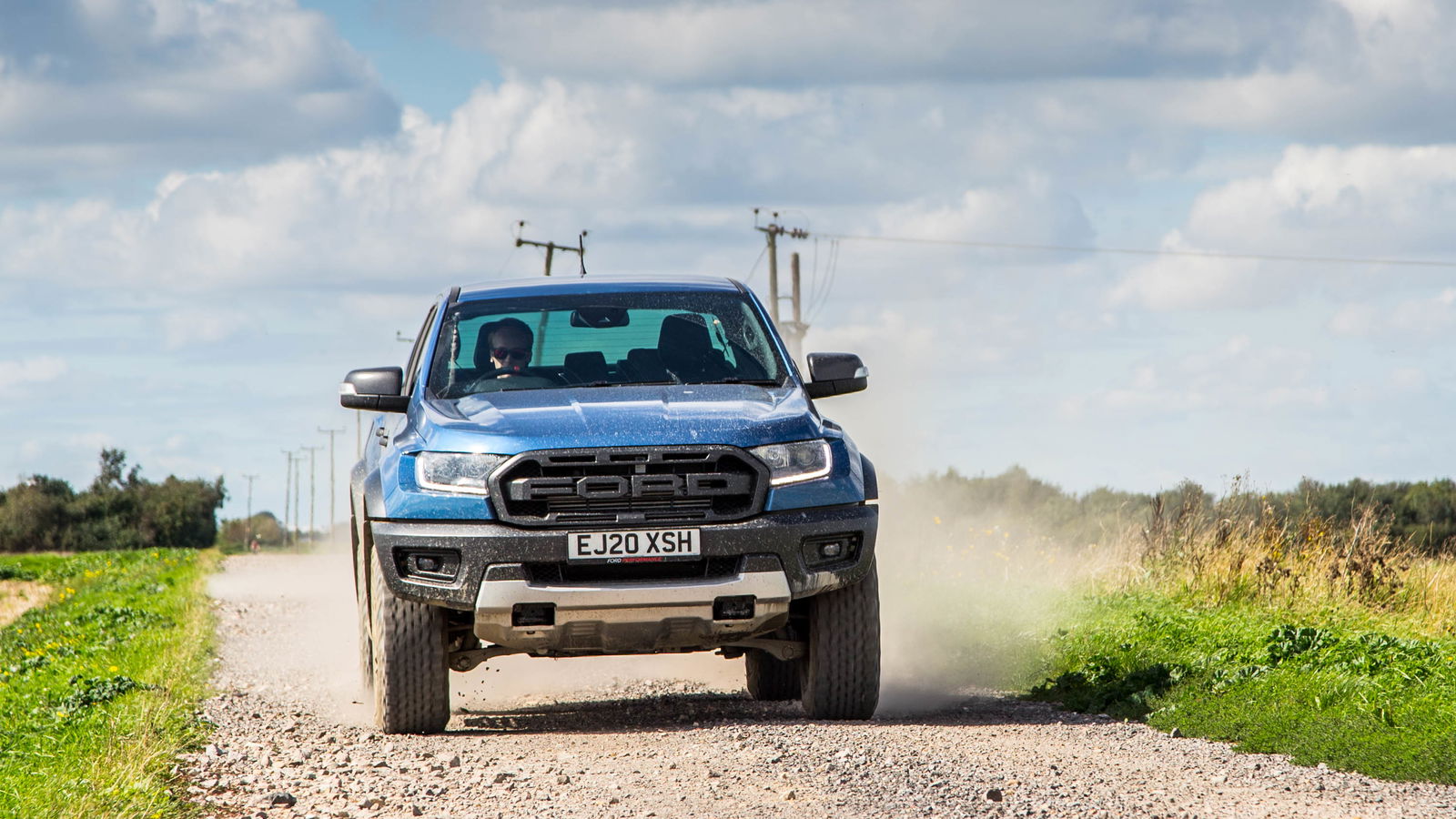
We’re nearing the end of our four months with a Ford Ranger Raptor. Despite looking like something that belongs in the Nevadan wilderness, it works surprisingly well in British suburbia.
On the whole, we’ve enjoyed our time with the Raptor thus far, with only a few minor complaints. Here’s what we discovered:
It's weirdly fun to drive on tarmac
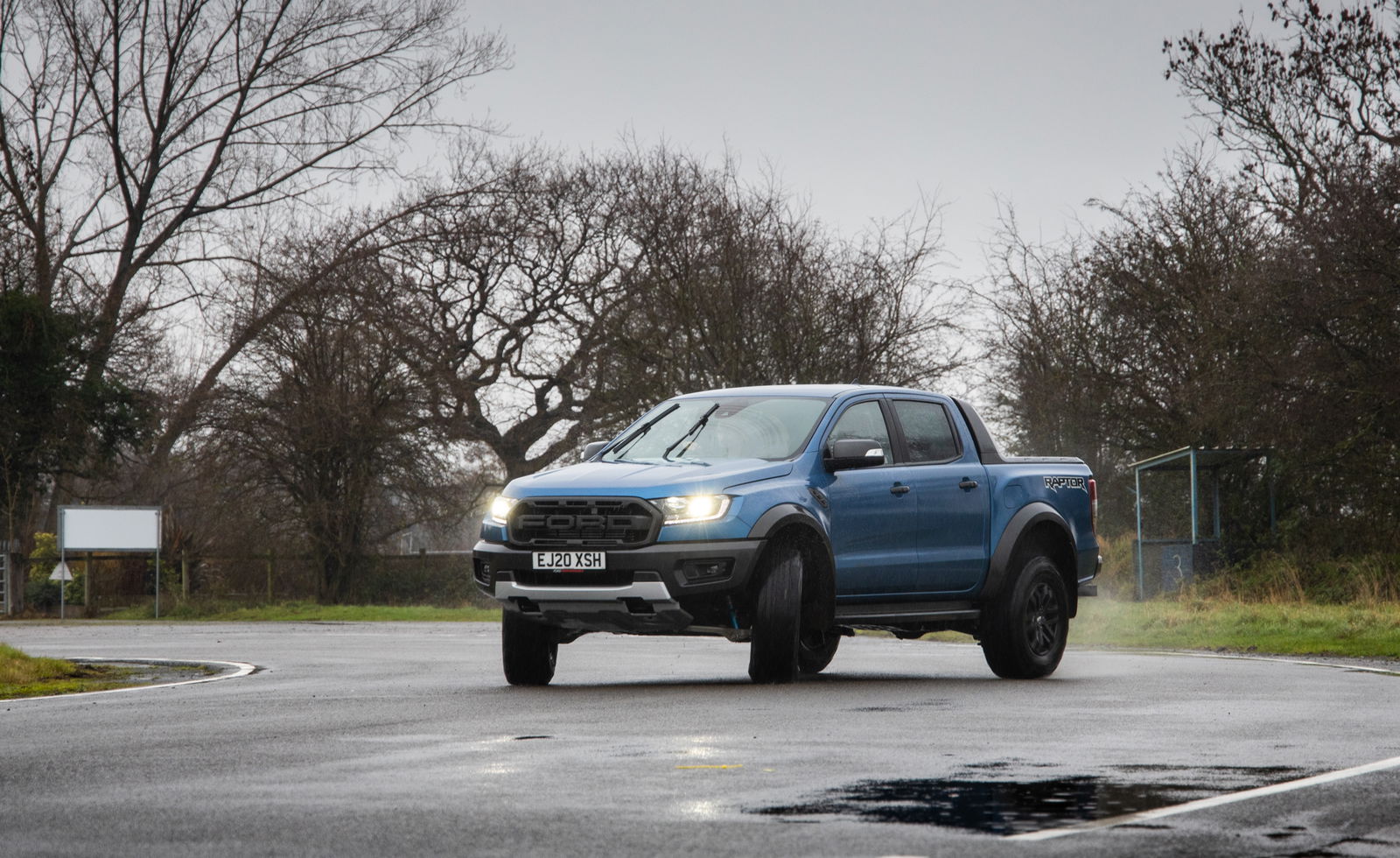
You’d think 99 per cent of the Raptor’s entertainment value would involve charging over rough terrain, but unexpectedly, it’s great fun on the road too. And as we’ve discovered, on track. With the traction control turned off.
The weighty steering feels satisfying to use, and there’s something fun about the way the long-travel suspension compresses and extends over undulations. As the limit is so much closer than it is even on a modern hatchback, you can be driving slowly and still be having an absolute ball.
Straight-line performance isn’t exactly stellar, of course - 0-62mph takes a leisurely 10 seconds. Overtakes do need a little forward planning, although in most circumstances the modest performance on offer has felt just about adequate.
It's surprisingly refined
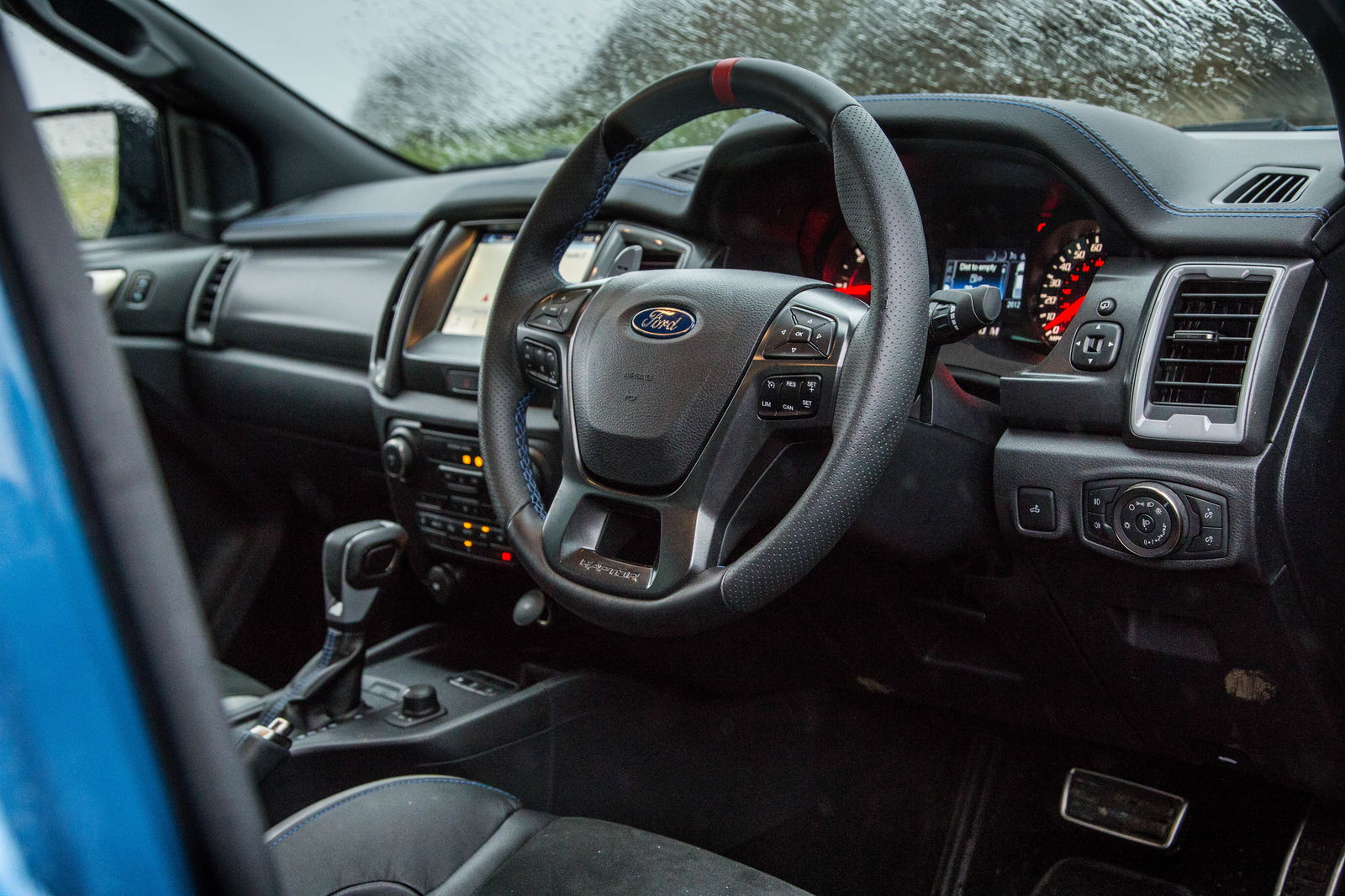
Even brand new pick-ups can feel a little crude and agricultural, but that’s not the case with the Ranger. The cabin’s just as nice as the kind of thing you’d find in a Ford passenger car, it’s reasonably quiet on the move, and it rides well, with only the occasional bit of shudder felt in the cabin - an inevitability when there’s a ladder frame under you.
I’ve done a few circa three-hour drives in the Raptor which have been no more tiring or annoying than they would have been in a conventional passenger car.
But not very economical
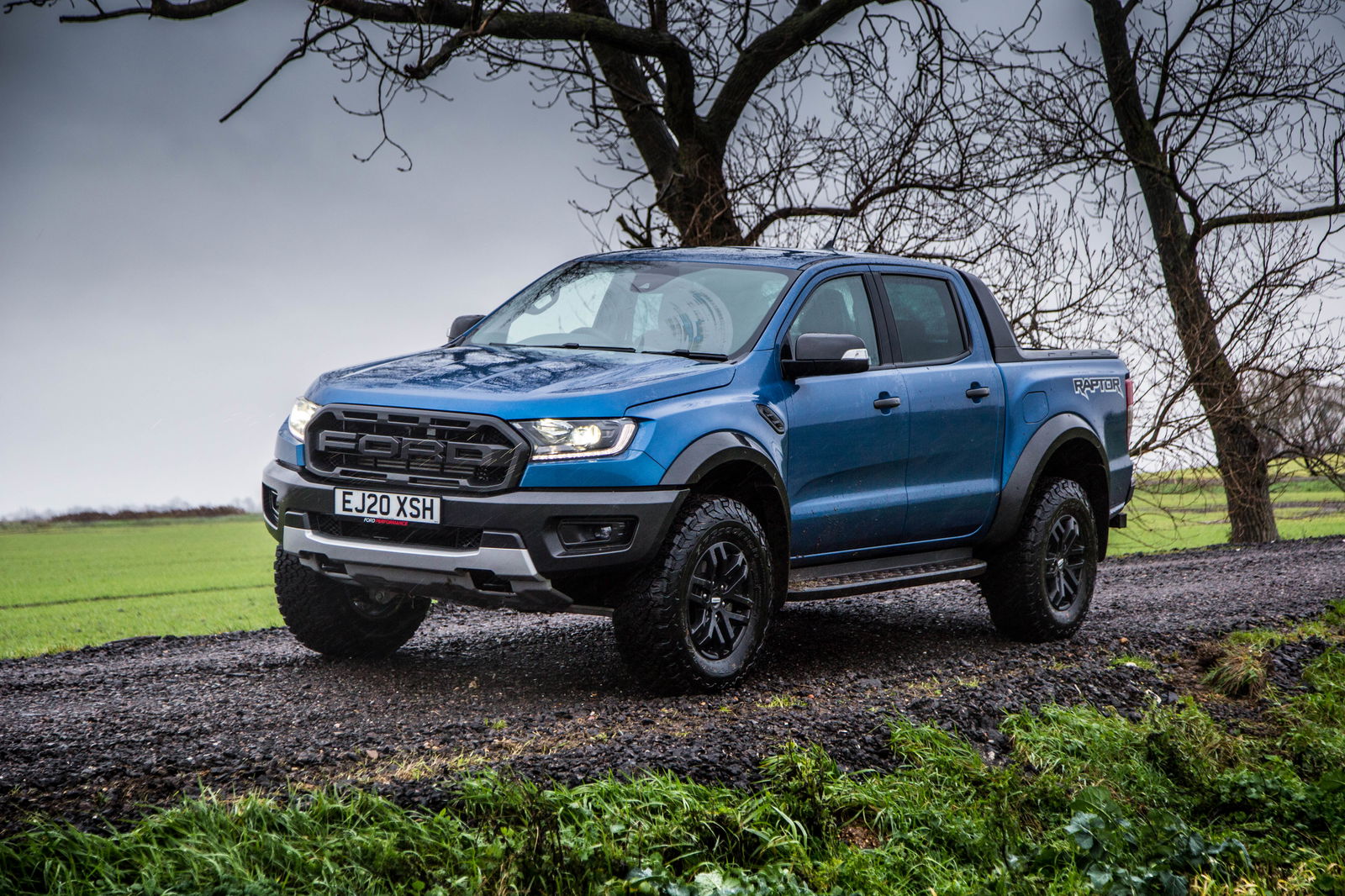
While I’ve been perfectly happy on longer jaunts in the Raptor, my wallet has been less so. It may lack the noisy 3.5-litre twin-turbo V6 of its F-150 Raptor cousin, but the use of 2.0-litre diesel engine doesn’t automatically mean good fuel economy.
That four-pot oil-burner has to push along a Ranger that’s put on about 200kg thanks to its stiffened frame and all the other off-road mods. It also wears draggy all-terrain tyres and has the aerodynamic profile of a detached house. And so, the best you can realistically hope for is to nudge it over the 30mpg mark on a long motorway run, and that’s with the cruise control set a few MPH under 70.
Judging by some time spent in the Ranger Thunder, which has the same engine as the Raptor, the latter’s off-road toybox will cost you 4-5mpg when cruising.
It's massive (for the UK)
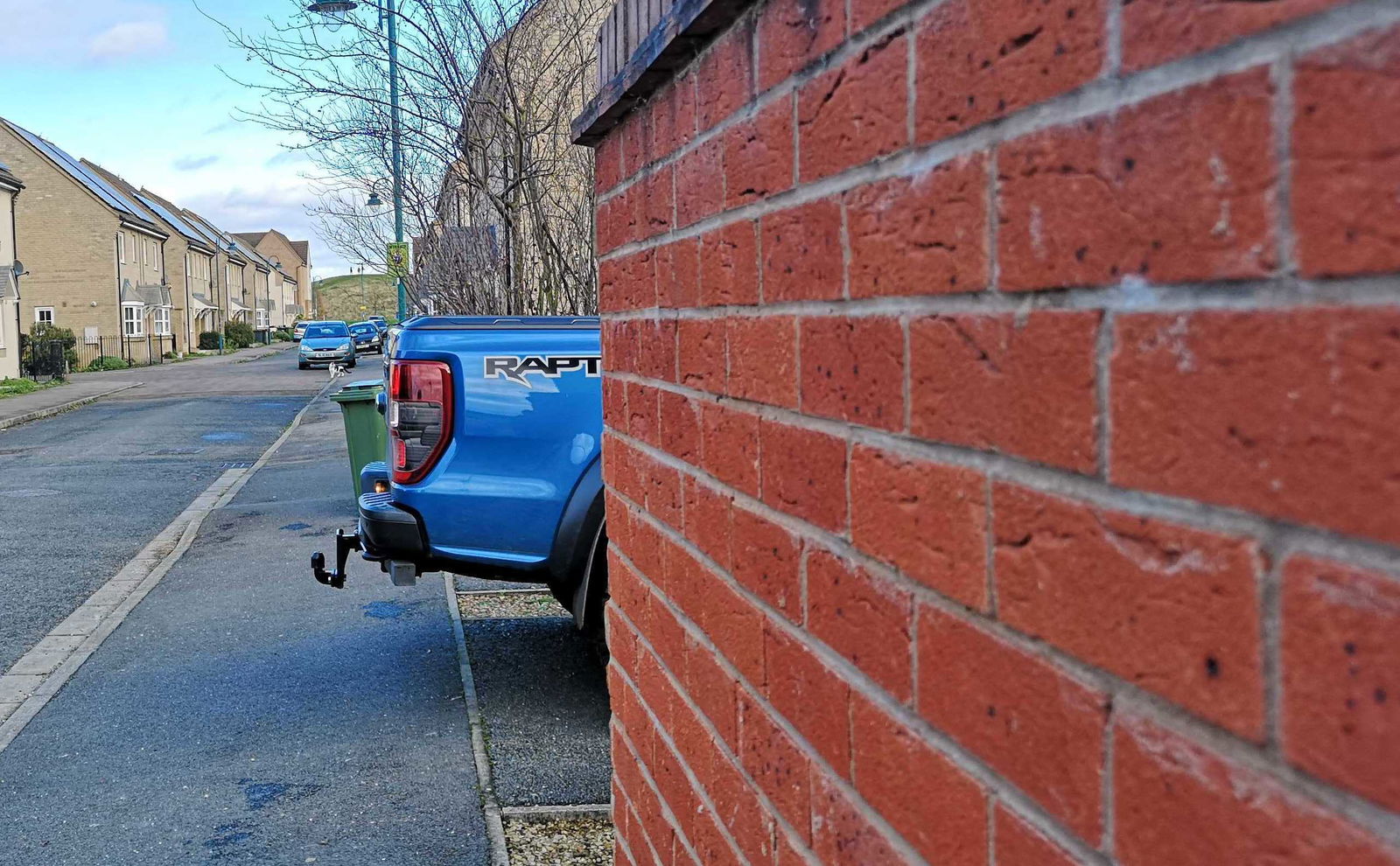
A pick-up the size of the Ranger would be considered tiny in the truck-loving USA, but here in the UK with our narrow roads, weeny parking spaces and minuscule driveways, it seems massive. The Raptor is comfortably longer than a standard-wheelbase S-Class and similar to the LWB version once you factor in the tow bar, all while carrying an additional 80mm in width.
It pokes off the end of my driveway (unless I park it so close to the garage door that I can’t open it), and most car parking spaces. It tends to fill the latter in terms of width, but at least you don’t have to worry about careless people opening their doors into yours - score one for metal tread steps!
A pick-up is the best way to carry bikes
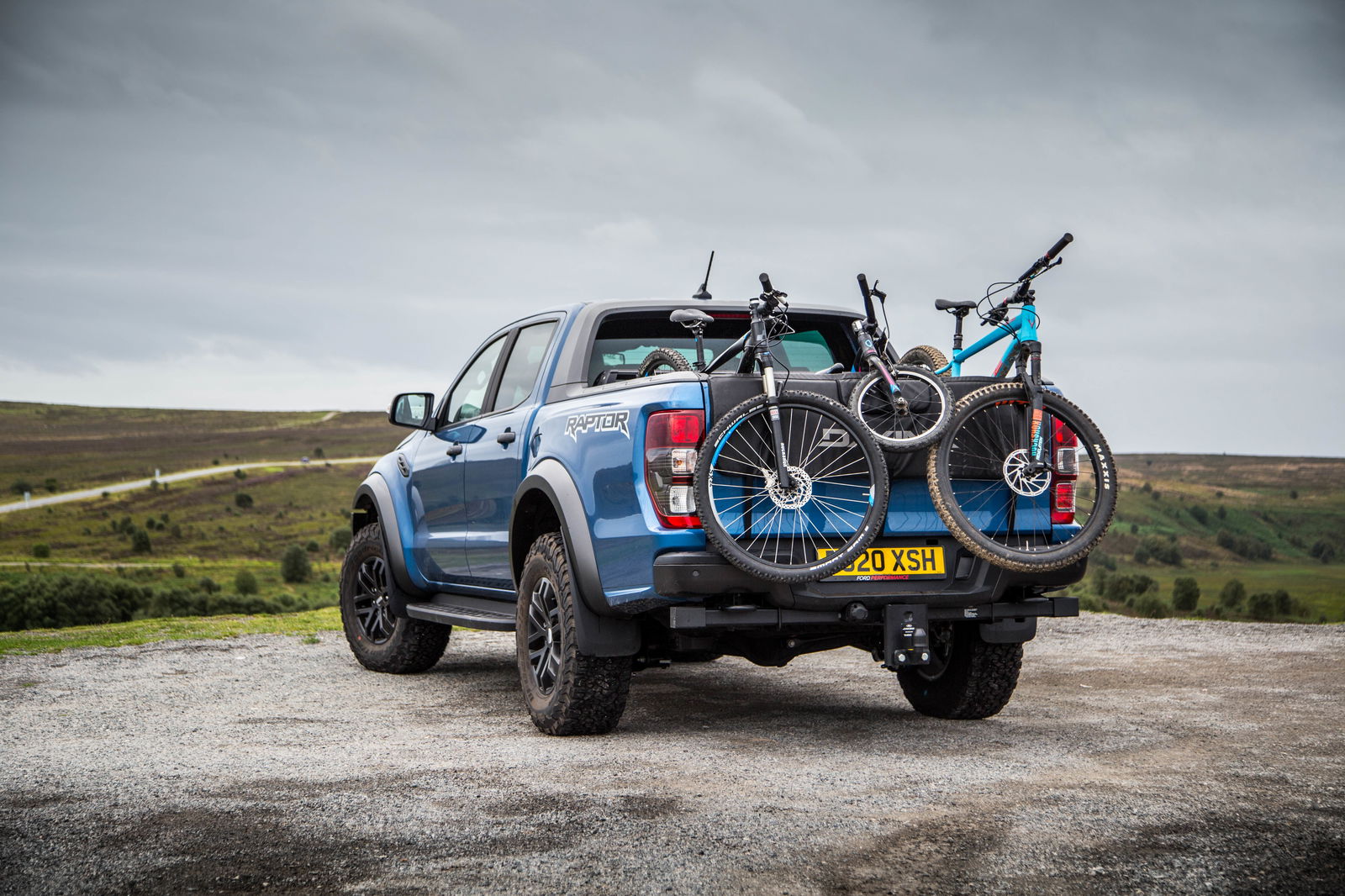
For most people, there are two main ways of carting around a bike - you take off a wheel (or two), fold down the seats and chuck it in the back, or you get a roof rack. If you have a pick-up, though, you don’t have to bother with either the faff of dismantling or carefully lifting a heavy bike onto the roof.
I spent £80 on a Dakine pick-up pad, which opened my eyes to the joys of hauling bikes with a truck. It clads the tailgate and includes five straps to secure your enduro sleds/hybrids/roadies by the bottom tube. Loading and unloading take seconds, and with most of the bike in the truck bed, the arrangement always feels nice and secure.
A word of warning, though - these pads seem to be designed in the USA where giant pick-ups are, as we’ve already explained, quite prevalent. If you have something Ranger-size, go for the smallest option - in terms of the Dakine one, the ‘small’ is almost too wide for the tailgate.
It could do with a front camera
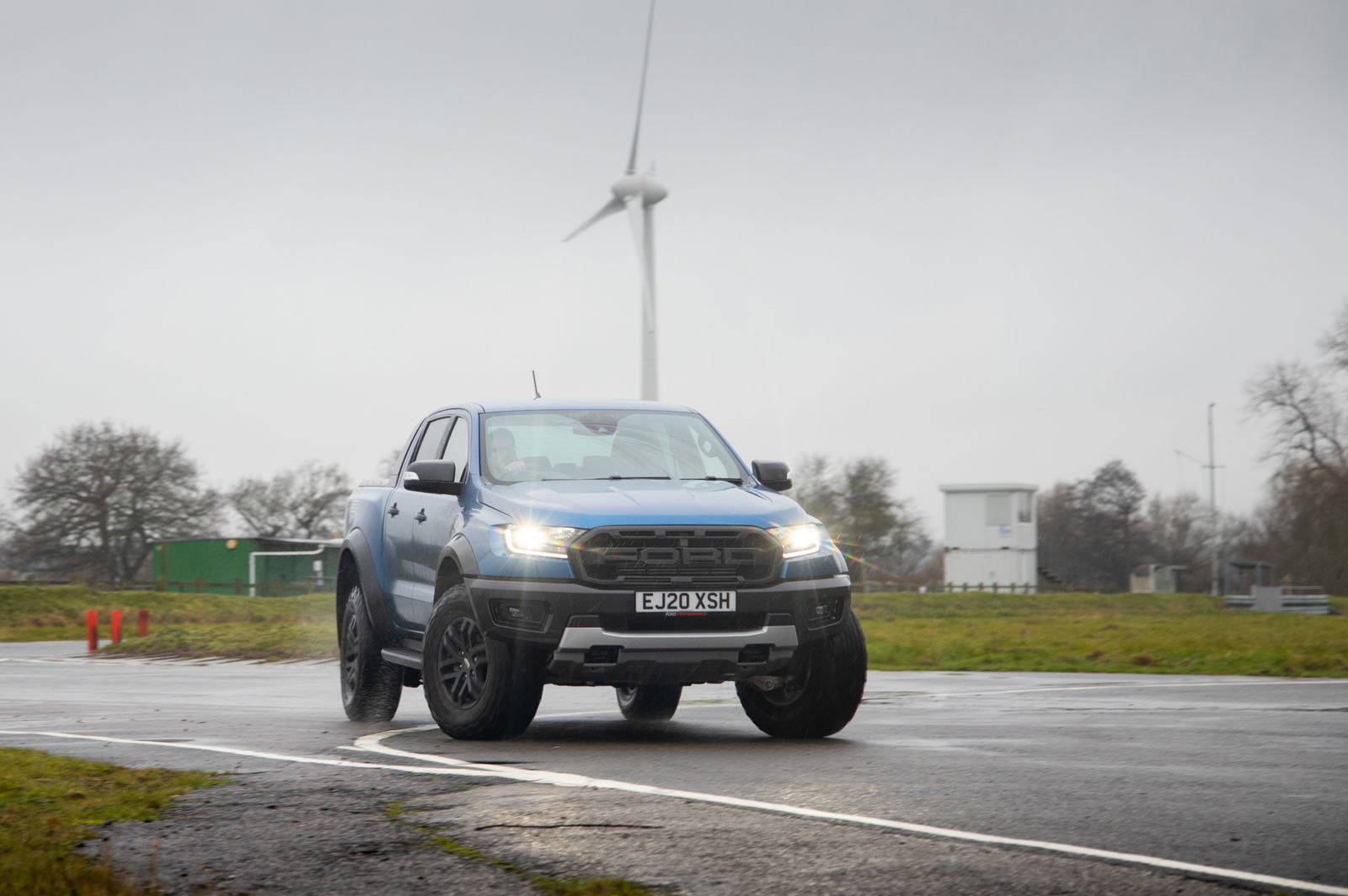
Another thing to bear in mind about the Raptor’s size is how damn tall it is. You get an additional 50mm of ground clearance relative to a standard Ranger, which makes judging how far away things are at the front rather difficult. When you’re parking, it feels like you’re about to drive over the car in front when in reality you’re miles off.
Front parking sensors, or better yet a camera would help massively, but weirdly, neither seem to be an option for the Raptor, despite sensors being an option on other Rangers.
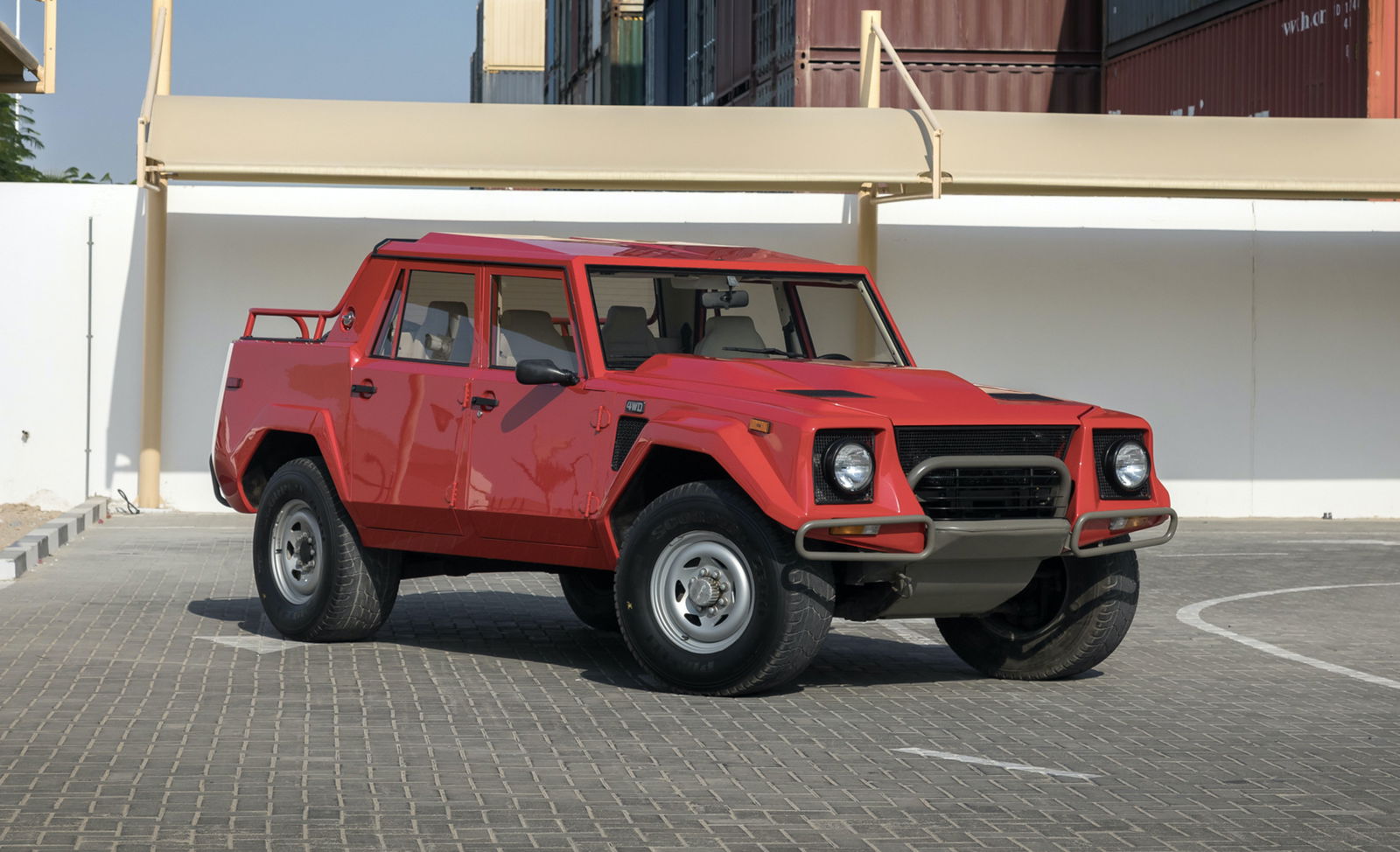

Comments
IMO the best way to transport bikes is a towbar mounted rack that sits behind the car. Lets you pop up to 5 bikes there, you can use whichever lock you wish to secure the bikes, doesn’t take up any interior room of the vehicle, still lets you go into undercover parking places, you only have to lift the bike to about chest height to put onto the rack, and only adds about half a metre onto the vehicles total length.
Sure, rear visibility is slightly compromised, but you still get full use of the side mirrors to see behind you so parking rear first is still easy and the bikes actually give you a clear reference point for how far back you can go.